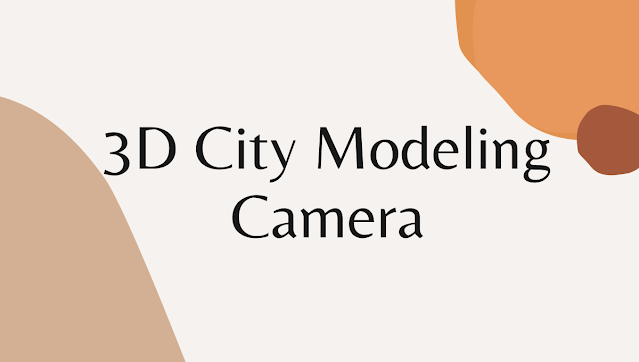As cities continue to grow and evolve, the need for accurate and detailed urban mapping becomes increasingly important. Traditional mapping methods often fall short in capturing the complexity and intricacies of urban environments. This is where the 3D city modeling camera, also known as a 3D urban mapping camera, emerges as a valuable tool. In this article, we will delve into how this camera works, and the benefits it offers in urban mapping and planning.
Understanding the 3D City Modeling Camera
A 3D city modeling camera is a specialized device designed to capture high-resolution imagery and collect data to create accurate 3D representations of urban landscapes. These cameras are equipped with advanced sensors and technologies that enable them to capture detailed information about buildings, terrain, and infrastructure. The data collected is then processed to generate precise 3D models of cities and their surroundings.
How the 3D City Modeling Camera Works
Data Acquisition: The 3D camera employs various techniques to acquire data. These may include aerial mapping photography using drones or aircraft, terrestrial photography using ground-based vehicles or handheld devices, or a combination of both. The camera captures a series of overlapping images from different angles, ensuring comprehensive coverage of the urban area.
Photogrammetry: Once the images are captured, photogrammetry techniques are applied to extract 3D information from the 2D images. Sophisticated algorithms analyze the overlapping images, identifying common points and using them to reconstruct the geometry of the captured objects. This process involves the calculation of camera positions, triangulation, and the creation of a dense point cloud representing the 3D structure of the city.
Texturing and Visualization: To enhance the visual realism of the 3D models, texture mapping techniques are employed. High-resolution images captured by the camera are projected onto the 3D models, adding texture and color to the surfaces. This step helps create realistic representations of buildings, streets, and other urban features.
The Benefits of the 3D City Modeling Camera
Accurate and Detailed Representation: The 3D city modeling camera enables the creation of highly accurate and detailed representations of urban environments. It captures fine details of buildings, landscapes, and infrastructure, providing planners, architects, and policymakers with a comprehensive view of the city. This level of detail aids in making informed decisions about urban development, infrastructure planning, and resource management.
Efficient Planning and Design: With the help of 3D city models generated by the camera, urban planners and architects can visualize proposed changes or new developments in the context of the existing cityscape. This allows for more efficient planning and design processes, reducing the risk of errors and ensuring that new structures harmonize with the surrounding environment.
Improved Communication and Stakeholder Engagement: The visual nature of 3D city models enhances communication and stakeholder engagement. These models provide a clear representation of urban plans, making it easier for stakeholders, including citizens, community groups, and decision-makers, to understand and provide feedback. This fosters greater collaboration and transparency in urban development projects.
Enhanced Decision-Making: The detailed information captured by the 3D city modeling camera enables better-informed decision-making. Planners and policymakers can assess the impact of proposed changes on various aspects, such as transportation, infrastructure, and environmental factors. This leads to more effective and sustainable urban development strategies.
FAQs
Q: Can the 3D city modeling camera be used for existing cities or is it primarily for new developments?
A: The city modeling camera can be used for both existing cities and new developments. It is valuable for capturing the current state of an urban area and can also assist in planning future developments.
Q: Are the 3D city models generated by the camera compatible with other planning and design software?
A: Yes, the 3D city models generated by the camera can be exported in various file formats and are compatible with common planning and design software. This allows for seamless integration with other tools and applications used in urban planning and design processes.
Q: Can the 3D city modeling camera be used for indoor environments as well?
A: While the primary focus of the camera is outdoor urban mapping, some advanced versions can also capture detailed indoor environments. These cameras are particularly useful for applications such as building interior mapping or architectural documentation.

Comments
Post a Comment